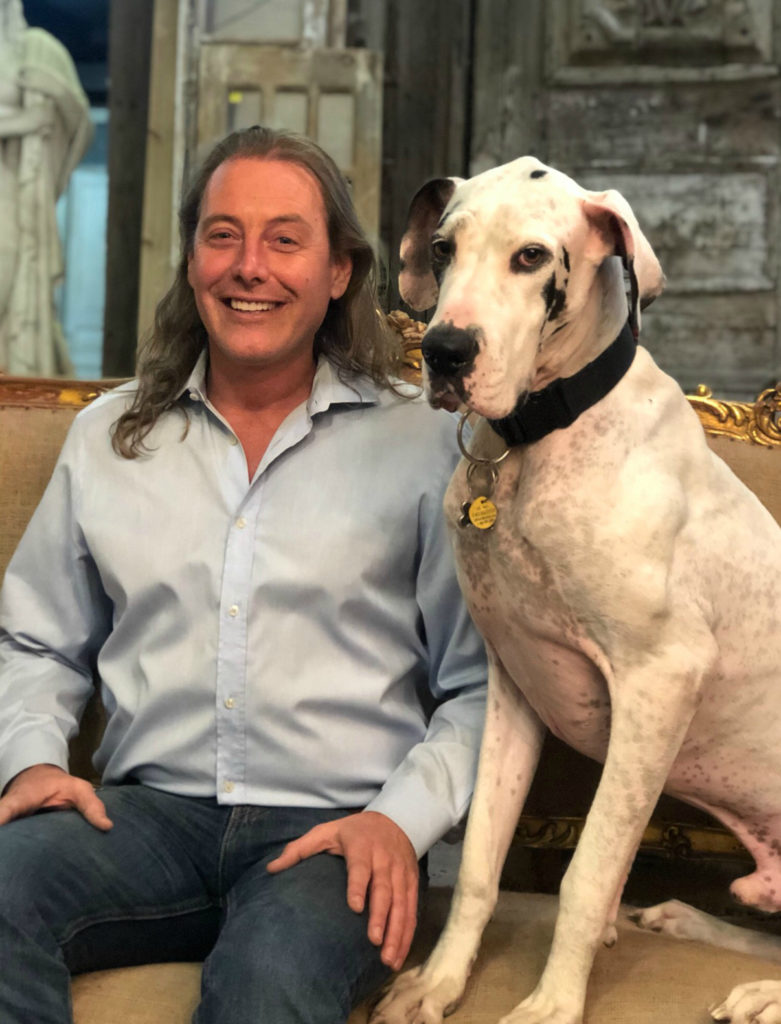
Choose Your Language:
Posted by: The Sumaira Foundation in NMO, Patient, Voices of NMO
According to all of his medical tests, Greg is negative for both multiple sclerosis (MS) and neuromyelitis optica (NMO). Like many people misdiagnosed due to similar symptoms, Greg was considered an MS patient and treated for years by self-injecting the interferon, Rebif. His symptoms were on-and-off numbness in his limbs…

His relapses were successfully treated with IV Solumedrol, sometimes followed by a prednisone taper. He was able to connect many relapses to personal and professional stress.
At age 30, fifteen years ago, Greg envisioned for himself a future in a wheelchair, unable to work or participate in much that he loved in life.
And then, five years later, Greg began having blurred, then double vision, from his left eye. It so confounded his ability to see that Greg had to wear a patch. He eventually lost vision in that eye, and was told that, as an MS patient, it was unlikely he’d ever regain his ability to use his left eye.
By that time, a new oral medication for MS was recommended, but the side effects could include damaging vision, so Greg was not willing to take that chance. He also began researching Rebif, and found that it was made from hamster ovary cells. This didn’t make sense to him, and Greg stopped all treatment.
Greg had moved from New York to Chicago to near Dallas for his work as a security manager for a large retailer. In 2012, upon arriving in Texas, he moved in with a lover who died less than a year later from cancer. Greg flared at the time, and saw a new neurologist. This doctor told him that he didn’t see signs of MS, and that it was probably just stress that caused the relapse.
Then in 2015, Greg’s right eye started seeing double. It had been a terribly stressful day at work. Greg went directly to his neurologist who told him to go straight to an eye doctor and an MS specialist. The eye doctor told Greg to run to the hospital to save his right eye. The MS specialist told Greg that treating the eye could be handled over time, and that he should proceed with plans for his annual vacation. Before the trip, Greg got two infusions of Solumedrol, and three upon his return.
Meanwhile, this MS specialist conjectured that he might have NMO, and referred Greg to a neuro-ophthalmologist. This professional told Greg,
“It’s just a matter of time until you go blind.”
Greg cried for two hours. Then, with the help of a friend, he picked himself back up.
He got more blood work. This doctor’s office was unresponsive. They didn’t give him his results or return his call. Greg reported them to his insurance company. This doctor no longer works in Texas.
Greg found a new neuro-ophthalmologist and a new neurologist. He was tested again for MS (negative) and NMO (negative). His doctors now agree that Greg is one of the 30% of NMOSD patients who are seronegative.
With his medical team in place, Greg’s goal was to keep as much vision as possible in his right eye. He started Rituxumab treatments. Still, his vision is impaired enough that Greg’s life has been somewhat limited. He is now on long-term disability, and is comfortable driving only to places he already knows. Bright lights and overcast days, heat and stress all exacerbate Greg’s ability to see.
One doctor suggested that because Greg was taking Rebif back then, the first attack in his left eye might have been particularly aggressive and unresponsive to treatment. If for no other reason, it is important that patients are correctly diagnosed before medications with dangerous side effects are proffered.
Greg is one of those handicapped people who looks fine. He used to feel embarrassed when asking for visual help when doing errands, but he has let go of that now. He’s decided he has two options. He can sit in a corner and cry (which, he says, grows old quickly), or he can get up and move on. Greg’s journey has taught him that we all have to find our own strength, as nobody can find it for us.
We have to be our own best advocates, because nobody will do it for us. And though we may have a disease, we don’t have to be defined by it. Life isn’t fair, Greg knows, but we can accept what we have and carry on as best we can.
Part of the way Greg has chosen to carry on is by working to raise awareness about NMO, as many of the medical professionals (and everyone else he spoke with) had never heard of NMO as he was treated for MS. He also is spreading the word about a free app that’s been of great help to him: BeMyEyes.com connects blind and low-vision people with sighted volunteers for visual assistance through live video calls.
Clearly Greg may be down, but he is in no way out.
As told to Gabriela Romanow in February 2019